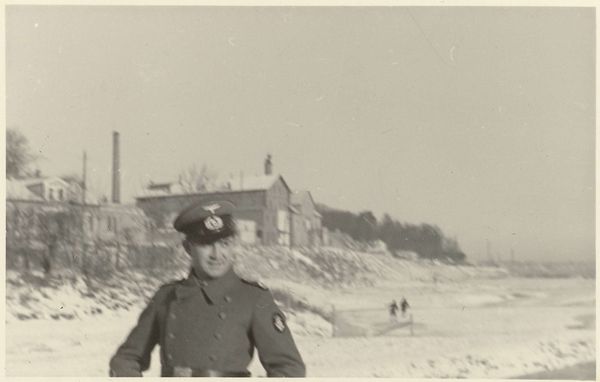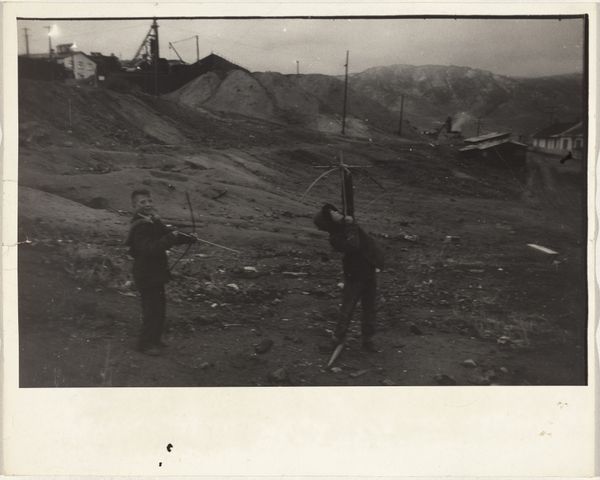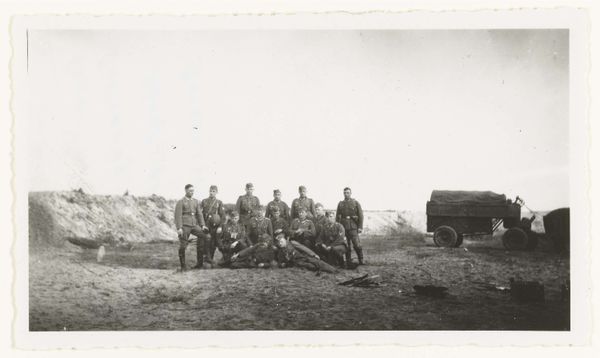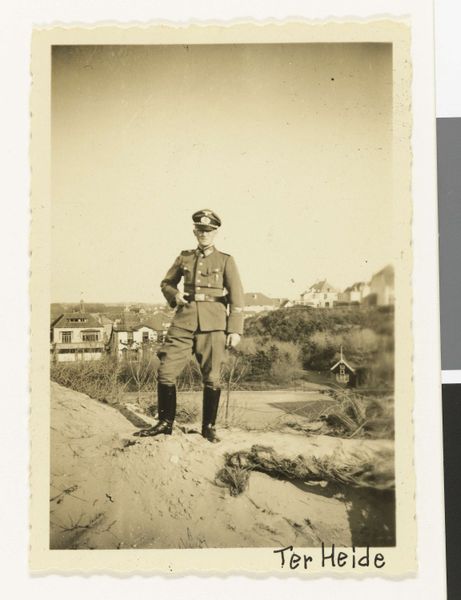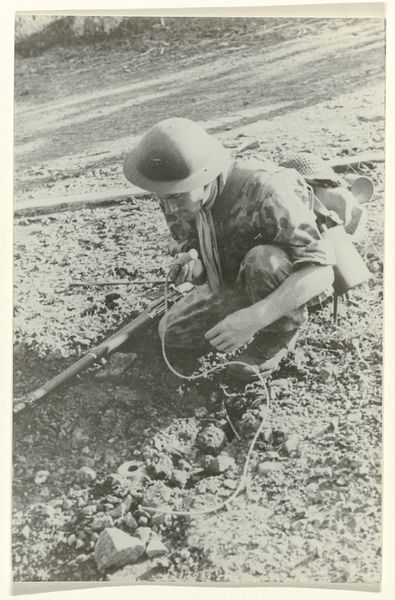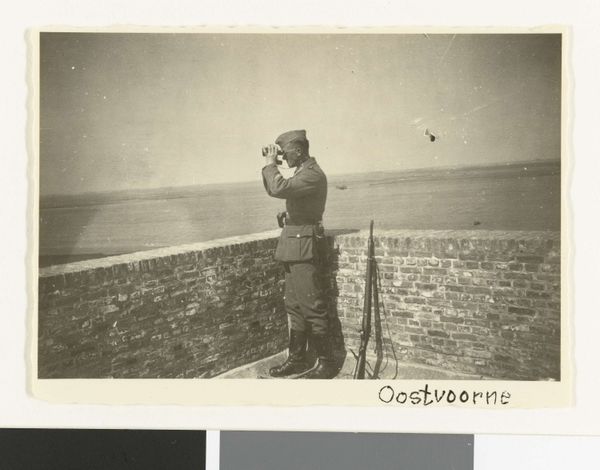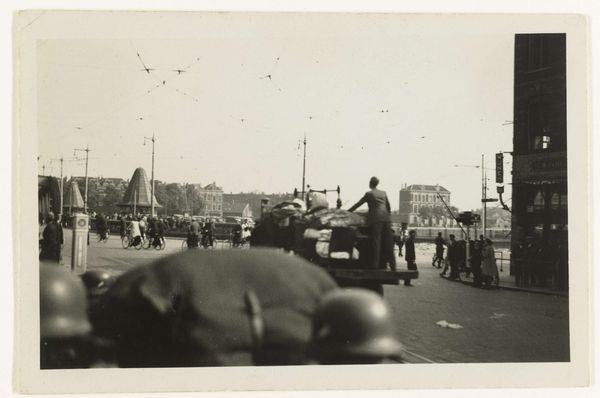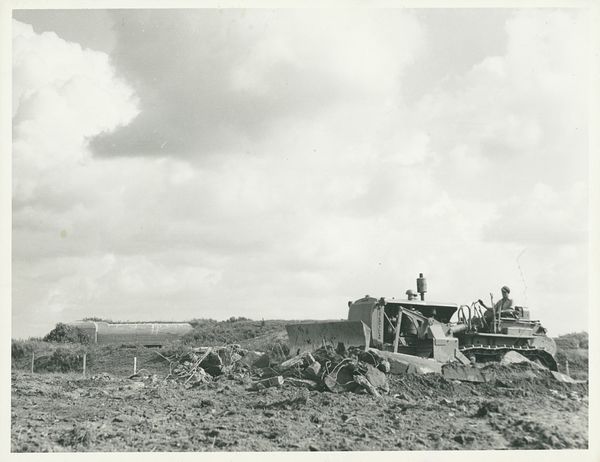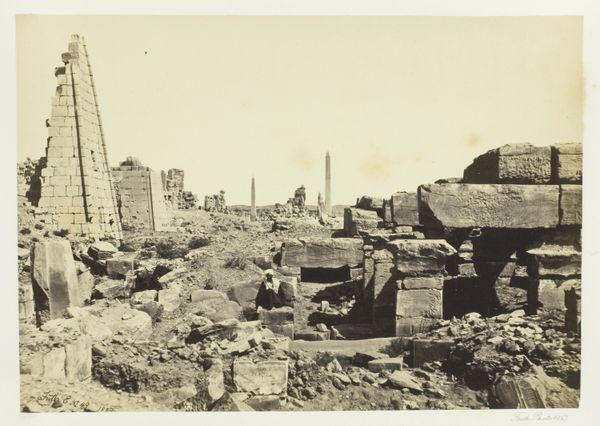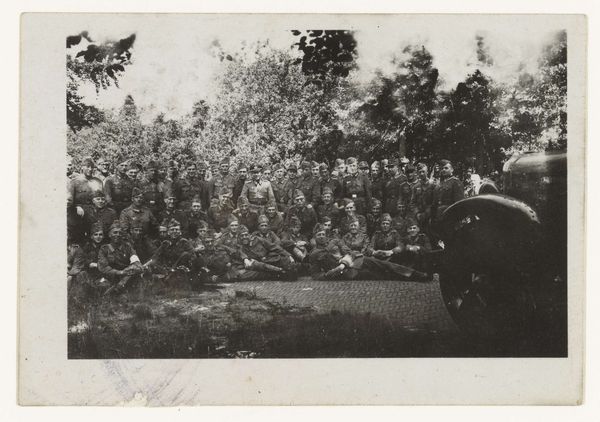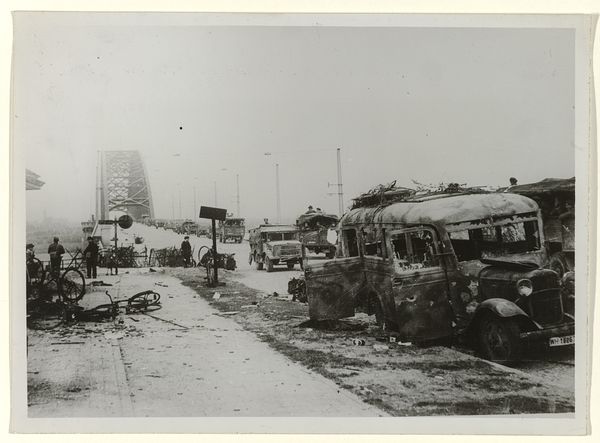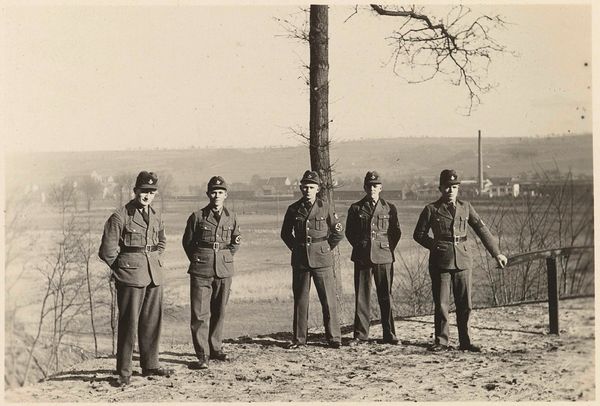
Wehrmachtsoldaat op de steenberg van de Staatsmijn Maurits in Geleen-Lutterade Possibly 1940 - 1945
0:00
0:00
photography, gelatin-silver-print
#
portrait
#
print photography
#
landscape
#
archive photography
#
photography
#
historical photography
#
digital photo altering
#
gelatin-silver-print
#
modernism
Dimensions: height 6.5 cm, width 9.5 cm
Copyright: Rijks Museum: Open Domain
Editor: This gelatin-silver print, "Wehrmachtsoldaat op de steenberg van de Staatsmijn Maurits in Geleen-Lutterade", probably taken sometime between 1940 and 1945 by an anonymous photographer, is striking. The way the soldier is positioned, almost like a monument overlooking the industrial landscape, is quite unsettling. What can you tell me about the history surrounding this photograph? Curator: Indeed, it's a powerful image. Considering the social and political context, the photograph operates on multiple levels. It's seemingly a straightforward depiction of a Wehrmacht soldier, likely occupying the Netherlands during World War II. But what’s crucial here is the backdrop: the Staatsmijn Maurits, a coal mine. These mines were vital to the Dutch economy, and, by extension, crucial for the German war machine during the occupation. The image thus becomes a document of forced labor and resource extraction. Editor: So, it's not just a portrait; it's a statement about power dynamics? Curator: Precisely. Consider how the photograph might have been used. Was it propaganda intended to project control, or perhaps a private memento of a soldier's experience? The fact that the photographer is anonymous only deepens the mystery. Who created this image, and what was their relationship to the scene? What does it mean to display such an image today, removed from its original context but still laden with its historical baggage? Editor: It makes me wonder about the ethics of displaying such imagery. It is important to display, and to think critically about, the more difficult material? Curator: The decision is never without complication. How we frame and contextualize these images is key to avoiding the repetition of such historical mistakes. This photograph is a potent reminder that even seemingly objective records like photographs are deeply intertwined with social, economic and political agendas. Editor: Thank you, I hadn't considered it that way. I guess there’s a lot more than meets the eye. Curator: Exactly! Thinking about how the context shapes an image makes it a really valuable method.
Comments
No comments
Be the first to comment and join the conversation on the ultimate creative platform.
